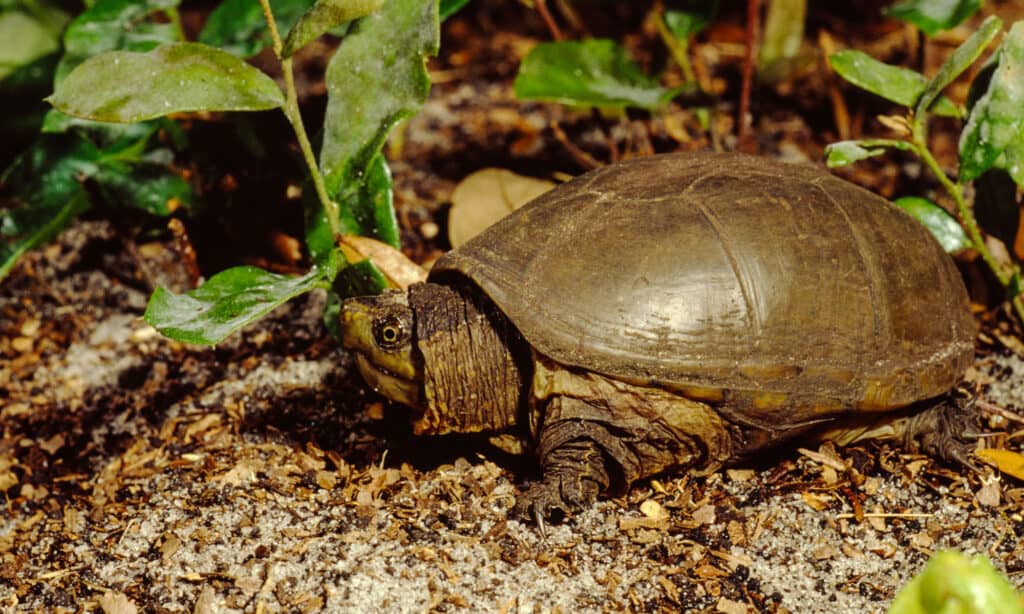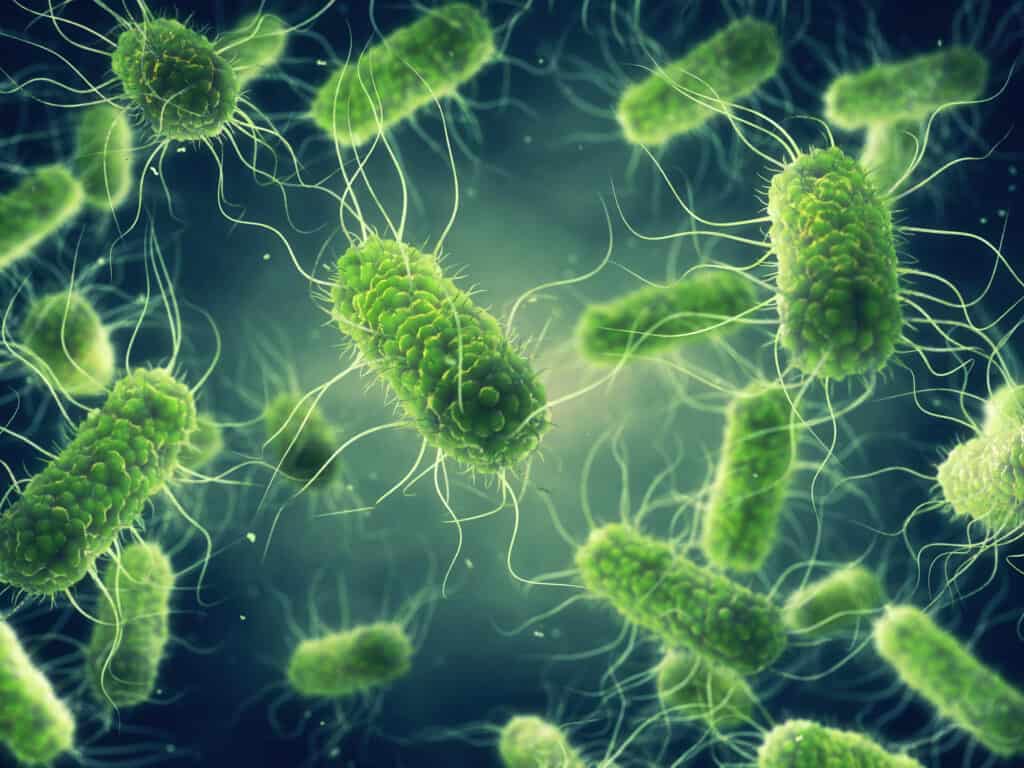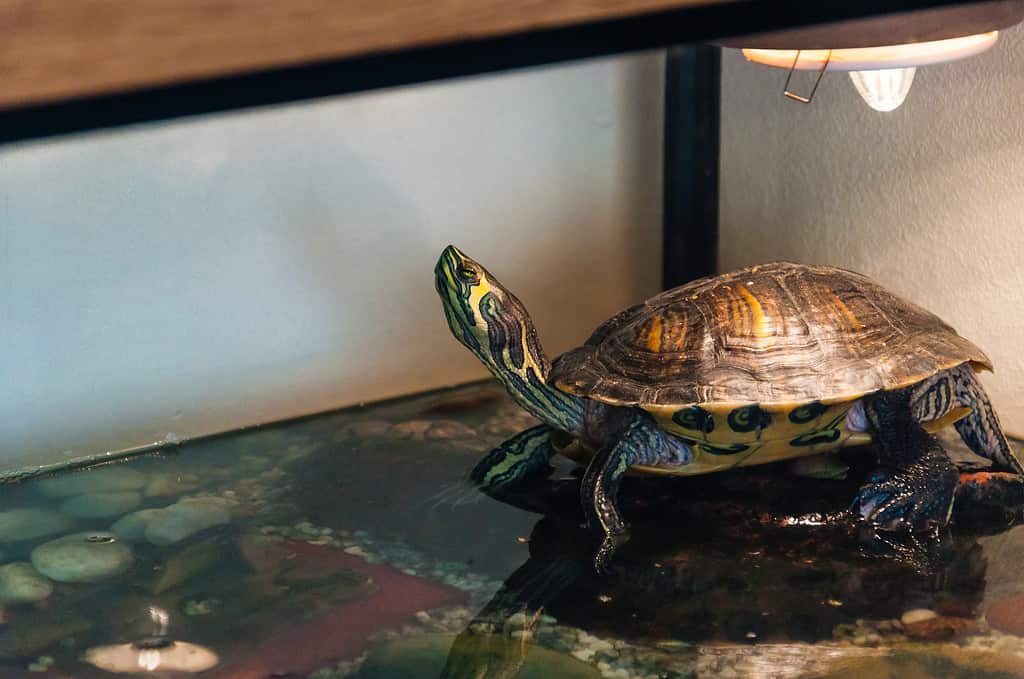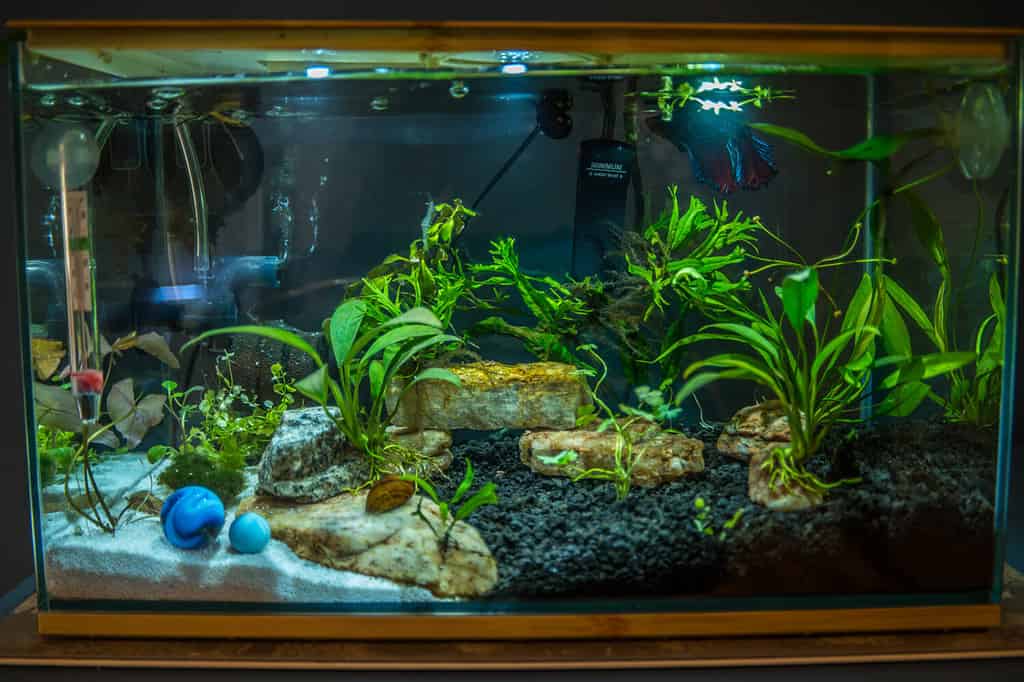Mud turtles, also known as eastern mud turtles, are about five inches in size and can live for nearly 50 years! Their scientific name is Kinosternon subrubrum. Instead of seeking to bathe in sunshine, mud turtles spend the majority of the day walking, hiding beneath foliage, or sitting on the bottoms of small ponds.
This type of turtle is common as a household pet. Because it requires both land and water in its habitat, mud turtles aren’t a great option for inexperienced pet owners. Whether you’re considering adopting one as a pet, or you just love turtles as much as the rest of us, keep on reading to learn all there is to know about mud turtles!
Mud Turtle Lifespan

There are four types of mud turtles.
©Kayla Blundell/Shutterstock.com
Mud turtles live for a very long time, though not quite as long as other tortoises. They have a 50-year lifespan. It is essential that you take this into consideration if you’re thinking of adopting one.
If you do adopt one and can no longer care for it, make sure the mud turtle goes to a caring home. Turtles raised in captivity could struggle to live in the wild. They can also develop into invasive species.
Mud Turtle Behavior
Despite being small and adorable, they aren’t the friendliest or most gentle of turtles. They can bite you when you handle them. Mud turtles tend to be grumpy and are capable of biting with their curled beaks if they feel threatened or uneasy.
This is only one of many reasons not to handle a pet mud turtle until it is absolutely required. When it pertains to little turtles like the mud turtle, one must also be cautious about Salmonella. It’s essential to wash your hands before and after handling these turtles.
To frighten off predators, mud turtles can exude a foul-smelling liquid. While some people cannot stand being around this aroma, as long as the turtle has always been in captivity, you should never smell anything.
Mud Turtle Health Profile

This species easily blends in with its environment.
©Liz Weber/Shutterstock.com
Mud turtles are robust reptiles that rarely experience health issues. Despite this, you should be on the lookout for any shifts in how they act or look that could indicate a health concern. Here are some of the more common health issues mud turtles may experience over their lifetime.
Skin Lacerations and Bruising
Cuts and bruises can be caused by blunt edges or violent tank mates. Mud turtles are friendly creatures; however, an aggressive turtle could harm or attack fellow turtles. Give aggressive turtles their own housing.
Apply topical treatments, such as betadine solution, to wounds that are bleeding. If you suspect an infection, please bring the turtle to the vet.
Shell Issues
Problems with their shell — including flaking, malformations, and shell rot — can happen, much like with other turtles. Bad shell health is typically caused by insufficient UVB lighting, poor nourishment, and dirty water.
Consult a veterinarian if these circumstances are resolved but the issue still exists.
Salmonella

Signs of
Salmonellainclude vomiting, headache, and diarrhea.
©nobeastsofierce/Shutterstock.com
Be mindful of the association between mud turtles and Salmonella if you plan to keep a mud turtle as a pet. Children instinctively like to pick up and interact with turtles because they are so cute, but because they may carry Salmonella, handling turtles can be harmful to one’s health.
The risk is regarded to be greatest for children because they aren’t as inclined to disinfect their hands after coming in contact with a mud turtle.
Nutritional Deficiencies
Inadequate nutrition can cause a number of issues, including respiratory issues, enlarged eyes, as well as metabolic bone disease. Provide the turtle with a nutritious diet to prevent these issues from happening.
Commercial turtle foods of high quality contain all the necessary nutrients. Add calcium and vitamin supplements to their meals as well if needed. Mud turtles without nutritional deficiencies should have shells without any lumps or flaking.
Clear eyes and uninfected skin are characteristics of a healthy turtle as well! Every year, get a sample of your mud turtle’s feces examined for intestinal parasites, which are typically eliminated with the right deworming medication.
Caring For a Mud Turtle
If you’re planning on having a mud turtle as a pet, it’s important to know everything you need to ensure your shelled friend lives a long, healthy, and happy life. Make sure you adopt from a reputable breeder to ensure you’re getting a healthy pet in the first place.
Here is some helpful information to get you on the right track!

All types of turtles can benefit from heating lamps.
©YKD/iStock via Getty Images
Mud Turtle Habitat
Even though they are little as adults, these turtles require enough space to swim and explore when housed in an aquatic habitat. At least one fish tank with a land section and a water portion should be available.
Your turtle will be able to swim and dive while still having space to move about and dig burrows on dry land. It’s a good rule of thumb to have the water around 10 inches deep, or twice the length of the turtle’s body. We suggest getting a 50 to 100-gallon fish tank to house your mud turtle.
Proper Lighting
In order for the turtle’s gastrointestinal tract to adequately absorb calcium, UVB lamps assist in the production of vitamin D3. Every 12 hours the UVB bulb should be turned on. You should change the bulb once every six months.
The bulb will need to be changed before you see it physically burn out. These bulbs lose the ability to produce UVB rays before they burn out.
Substrate

You can use similar substrates that you find in the aquarium area of your local pet store.
©Sandra Burm/Shutterstock.com
The water side of the tank will stay cleaner if the bottom is made of gravel rather than muck. Having a floating area for your turtle to lounge on would be a nice addition. To prevent your turtle from accidentally falling out of the habitat and onto the floor, build a secure ramp that connects the higher and lower levels in the middle of the arrangement. There are a variety of substrate options on the market to make it easy to find one your turtle will enjoy.
Heat Lamps
Make sure that no area of their home becomes too cold. All turtle species require both heat and UVB lighting. Large heat bulbs that are intended for keeping the mud turtle warm heat up the whole area that mud turtles inhabit.
The water in the tank should be between 74 and 78 degrees. To keep the water temperature within the proper range, conventional reptile heat lamps and an additional UVB bulb should be used.
It is recommended that the average tank temperature range from 78 to 82 degrees Fahrenheit.
Food

Many types of turtles love to munch on leafy greens.
©_jure/iStock via Getty Images
Mud turtles are notoriously messy eaters, therefore some owners build an extra sub-enclosure as a dining area. This isn’t necessary but can save you time cleaning up their feeding area.
The majority of a mud turtle’s diet consists of worms, fish, and snails. Every other day, provide a single protein-rich meal until the turtle is satiated. Pellets for turtles are a good supplement to their diet in captivity.
Feed them as much dark-colored, leafy produce, including fresh parsley and dandelion greens. Clean salad leaves should also be provided every day. Avoid romaine and iceberg lettuce.
Provide calcium supplements three times per week for mature turtles and daily for hatchlings.
Tank Filters
Mud turtles spend a lot of time in the water, despite the fact that they are not particularly adept swimmers. Turtles require clean water to avoid illnesses and infections. Many people like having a canister filter to keep the tank clean.
You can also have a submersible filter to keep the water in their tank healthy and aerated. Use multiple filters to maintain clean water. At least once every two weeks, wash the gravel in the tank with diluted bleach.
Make sure all of the bleach is rinsed off before returning the rocks back to the tank.
The photo featured at the top of this post is © Kayla Blundell/Shutterstock.com
Thank you for reading! Have some feedback for us? Contact the AZ Animals editorial team.






